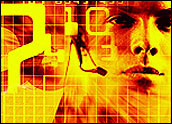
WhenRoyal Caribbean tappedSteelcase Applied Research to help it outfit a new call center in Oregon, the cruise line had done its due diligence.
It didn’t require any guidance, for instance, on what chairs it wanted its reps to use. In fact, the company had given a great deal of thought to what might seem to outsiders to be the most basic of all contact center equipment.
After much market research and many years experience with its other call centers, Royal Caribbean had come to favor a certain brand of chair for the way it accommodates different work processes and body types, Steelcase Workplace Consultant Tidra Staples told CRM Buyer.
Other choices the company made in setting up its third and newestcall center include an open, wave-like work table design.
“The traditional workstation is a small, restrictive space,” Staples said. “This type of layout and pattern gives reps relief from stagnant body postures.” It also facilitates mentoring — an important element of the operation — by encouraging face-to-face communication between reps and supervisors.
Supervisors’ offices are located on the same floor as the contact center operations instead of above the reps’ stations or in another part of the building.
“Managers are at the same level as the reps, so they don’t seem to be ‘overbearing’ — and also so they can have quick access to them in case there are problems,” Staples explained.
The facility includes a variety of multipurpose rooms for people to meet and interact.
Royal Caribbean did not develop this design in a vacuum, Staples said. It began with the establishment of a policy on workplace ergonomics. The company then surveyed its employees to find out what worked best for them.
The planning has paid off, said Russ Bogue, director of global facilities and properties.
“The wave layout appeals particularly to younger staff members,” Bogue said. “They say it offers more visual interest and chances to interact. Supervisors find it helpful because they can quickly see any employee who needs assistance. And all employees seem to agree that it creates a feeling of energy in the workplace.”
Next-Gen Operations
Welcome to the contact center revolution. In many ways, Royal Caribbean is standardizing its designs on tried-and-true formulas that have already proven successful in other call centers. What is different, however, is the focus on ergonomics for maximum operational efficiency and employee comfort.
The benefits are obvious. Contact centers tend to have extremely high turnover. Providing a more pleasant and comfortable work environment is one way management is hoping to discourage the outflow.
Contact centers can’t afford to skimp on the cost of chairs anymore, for example, Mark Anderson, a contact center specialist with theThompson Advisory Group (TAG) told CRM Buyer. “It can make or break your retention.”
Other work station innovations include desks that can be elevated so a rep who feels like standing up for a while can do so and continue typing. Keyboards are also a focus. Here, though, Anderson said, not as much consensus has been reached as to the best design.
“A lot of call centers like the split key board because it fits the hand better,” he noted, “but I have seen private companies with internal call centers experiment to get better results.”
Headset Choices
Headsets are another critical piece of equipment that reps must like using. The selection can be a bit tricky to make, depending on the size of the call center, its budget, and its security requirements, John Sung Kim, founder ofLeadMarket, told CRM Buyer. Kim was also founder of Five9, a hosted contact center company based on Voice over Internet Protocol, or VoIP (he sold his interest in the firm last year).
“We went through every consideration from A to Z,” Kim remembered.
Budget is the first factor, he said. “Obviously, one must work within the confines of what is financially doable. Cost constraints, however, can affect the performance and reliability of the equipment. This is true whether your call center is remaining PSTN (public switched telephone network) or going VoIP.”
Then there is the distribution of agents. If the contact center uses remote agents, then USB (universal serial bus) headsets are the most convenient. Otherwise, “setting up separate phone jacks and installing a traditional headset phone for every single remote agent — especially considering agent churn — can be quite an IT burden,” said Kim.
These considerations have to be weighed against the floor space available, he continued.
“Traditional wiring is a pain, but having a VoIP-based secure wireless network with PCs and USB-based headsets make for nice, clean call centers that can be set up and moved in a fraction of the time of their traditionally wired counterparts,” Kim explained.
Take into account this cost-savings factor when deciding to go wireless on VoIP, or wired with traditional PBX (private branch exchange) and RJ11 (registered jack) phone lines wired to traditional headsets, he advised.
Security concerns are another issue, especially as the center is bound to be handling customer information. This could rule out Bluetooth headsets, unless security is factored into their use.
“While it’s true that the security risks of Bluetooth are limited because of the technology’s short range,” Kim said, “in a call center environment, this can be a security threat.”
Call centers are more likely to give greater consideration to the comfort of the chair or lighting than to the headset ergonomics, though, TAG’s Anderson said.
That may change if supply has anything to do with demand.
“I am not seeing a massive migration to Bluetooth or similar technology at this time, but I have seen a quantum increase in companies representing those solutions, especially at the trade shows and Contact Center trade magazines,” he observed.
“The workforce generation that is hitting the market today accepts — and prefers — the wireless Bluetooth technology and they have used it for years in their personal lives. As costs become more acceptable to contact center volumes, so will the [Bluetooth] solution.”
























































Social CRM
See all Social CRM